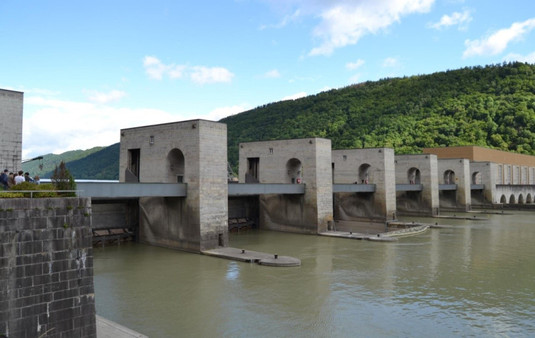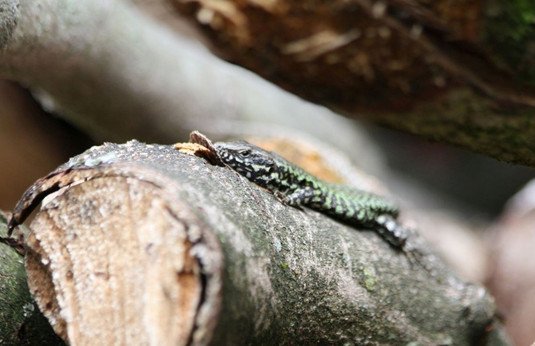Danube Excursion: Passau—Linz
Passau → Linz
11.08.2017
by Lea Wiser
Our third day on the Danube excursion was both eventful and thought provoking, packed with activities covering a broad range of subjects: from environment and sustainability to modern history and the Nazi regime, to where these two subjects intersect—the city of Linz.
Jochenstein
Our first stops, the Donaukraftwerk in Jochenstein and Haus am Strom in Untergriesbach, were already familiar to us, but during this visit we were able to admire the views from the other side of the Danube. On the way, we passed the Schlögener Schlinge, a meandering part of the river that created a loess-rich agricultural land below the steep slopes of the Bohemian Massif.

Hydropower plant Jochenstein. The German-Austrian border runs through the center of the structure. Photo Credit: Lea Wiser.
Because the river marks the border to Austria, soon after Passau we found ourselves in the neighboring country. For the American participants, in particular, it was a unique experience to be able to walk back to Germany alonga path over the power station, situated in the picturesque river valley.
Jochenstein has been operating since 1956, and remains the biggest river power plant in Germany. After World War II, the district around Passau and the Bavarian Forest was one of the poorest areas of Bavaria, and the hydroelectric power plant helped to provide work for many people. Here, we learnt that water energy generates 50 million kilowatt hours yearly. This is equal to the amount of energy that 190,000 tons of petroleum oil or 280,000 tonnes of coal burnt in a thermal power plant would generate, which in turn is equivalent to a carbon dioxide emission of 700,000 tonnes.

Smaragd lizard (Lacerta viridis). Photo: Martin Meiske.
The technology enthusiasts on our trip could gaze at the 240-meter-long locks and huge dams. Our program continued with a tour through the Haus am Strom, a center for sustainable economy and environmental teaching, which is situated right next to the power plant.
Read the full article on Seeing the Woods.





